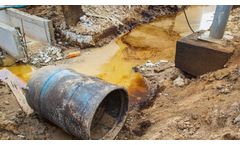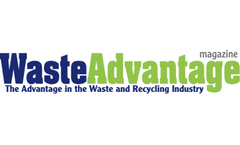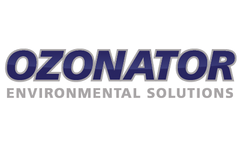Refine by
Hazardous Wastes Articles & Analysis
10 articles found
Hoskinson’s method of disposing of the most hazardous waste has been used in the medical disposal industry for ...
The Human Health Risk Assessment (HHRA) Note Number 3, revised in May 2022, includes detailed information about the California Department of Toxic Substances Control (DTSC) development of modified screening levels based on the U.S. Environmental Protection Agency’s (USEPA) Regional Screening Levels (RSLs) for human health risk assessment at hazardous waste sites and permitted facilities. ...
Biomedical liquid waste originating from healthcare facilities, laboratories, and research centers often contains infectious materials that, when discharged without proper treatment, can contribute to the spread of communicable diseases through public sewers. These diseases can affect individuals coming into contact with contaminated water sources ...
Lower costs, more security, easier handling and optimal CO 2 balance: With the BlueLavage® rinsing and suction system, UTK Solution GmbH has succeeded in adapting a proven surgical technology to modern clinical processes. The heart of the innovation is the reusable charging and energy unit, which completely avoids electronic waste and whose optimized energy transmission ensures smoother and ...
Overview of pharmaceutical sludge: Pharmaceutical wastewater is a type of organic wastewater with complex components, high biological toxicity, and difficult-to-degrade substances. It is a recognized source of serious environmental pollution. Pharmaceutical wastewater is discharged intermittently, and the water quality and volume fluctuate greatly. Pharmaceutical sludge refers to the ...
Location: Pacific Ocean Clients: PacWaste / SPREP Waste Type: Medical & Hazardous waste Solution(s) Supplied: i8-M15, i8M-60, i8M-75 The PacWaste project consisted of the installation and commissioning of 26 state-of-the-art healthcare waste incinerators in Kiribati, Tonga, Tuvalu and Vanuatu These high temperature medical incinerators ensure that biohazardous waste (such as pathological, ...
Recently proposed EPA regulation provides a streamlined approach for healthcare facilities to better manage their hazardous pharmaceutical waste. To prepare for these changes, healthcare facilities, including manufacturers, distributers, pharmacies and retailers of pharmaceutical products in the USA will need to make operational adjustments around notification, training, record keeping and ...
Serving the needs of commercial, industrial and residential customers, Progressive Waste Solutions Ltd. (Vaughan, ON) is the third largest non-hazardous solid waste management company in North America. Their history began in 2000 when they acquired some of the Canadian waste assets of Browning Ferris International, or BFI, which itself had been acquired by Allied Waste. CEO Keith Carrigan, with ...
This article reviews significant environmental health projects conducted by the Pennsylvania Department of Health, particularly the Division of Environmental Health, during the 1980s. The authors describe lessons learned from dealing with health concerns related to the Vietnam War, Three Mile Island, hazardous waste sites, and radon, as well as emerging issues during that decade. ...
In 2006, the annual American Hospital Association survey on hospitals reported there were nearly 950,000 hospital beds in the U.S.1 In Canada in 2005 the number of acute care hospital beds was approximately 103,000.2 Combined, there are over 1 million hospital beds in Canada and the U.S. Annual waste production in hospitals is about 2 tonnes per hospital bed, or about 2,000,000 tonnes in total.3 ...










